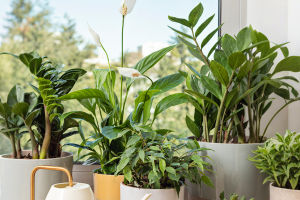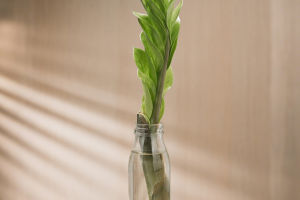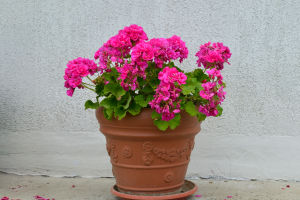Adding indoor plants to our living spaces brings more than just aesthetic beauty—it improves air quality, boosts mood, and can even reduce stress.
But with so many different plants to choose from, how do we pick the right ones? Whether you're a seasoned plant parent or a first-timer, it can be overwhelming to know where to start.
Don't worry! We're here to help you find the perfect plants for your home. In this article, we'll guide you through the steps of choosing plants that match your space, lifestyle, and level of care. By the end, you'll be ready to turn your home into a thriving green oasis!
Consider Your Space
The first step in choosing indoor plants is to think about the space available in your home. The size of the room, the amount of sunlight it gets, and the humidity levels are all important factors. Some plants thrive in bright, sunny spaces, while others prefer more shaded areas.
If you have a large living room with plenty of natural light, you might consider plants like fiddle-leaf figs or palm trees, which need ample sunlight to flourish. On the other hand, if you're working with a smaller room or one that doesn't get much sunlight, go for low-light-loving plants like snake plants, pothos, or ZZ plants. These plants are perfect for spaces where light is limited, and they're incredibly easy to care for.
Understand Your Plant Care Commitment
One of the most important factors to consider when choosing indoor plants is how much time you're willing to dedicate to plant care. We all lead busy lives, so it's essential to pick plants that match your level of commitment.
If you're looking for low-maintenance options, there are plenty of plants that can thrive with minimal attention. For example, succulents and cacti require very little water and can tolerate neglect. Snake plants, mentioned earlier, are also great for beginners because they don't need frequent watering and can survive in various lighting conditions.
If you enjoy spending more time caring for your plants and have the time to dedicate to their needs, you can opt for plants that require more attention, like orchids, which need specific humidity and watering schedules to thrive.
Factor in Humidity and Temperature
When selecting plants, it's also crucial to consider the climate of your home. Different plants have varying humidity and temperature preferences. For example, tropical plants like peace lilies and monstera need higher humidity levels to thrive, so they are best suited for rooms like bathrooms or kitchens where moisture levels are higher.
In contrast, plants like the spider plant and snake plant are more adaptable to drier conditions and can thrive in a living room or office with average indoor humidity. If you live in a dry climate or your home is air-conditioned year-round, you may want to opt for more drought-tolerant varieties.
Size and Aesthetic Appeal
Once you've taken the size of your space and your care commitment into account, it's time to think about aesthetics. Plants can be a beautiful addition to your décor, so it's worth considering how the plant's shape, color, and texture will complement your home.
If you're after a bold statement piece, go for larger plants like the fiddle-leaf fig or rubber plant. These plants make a striking visual impact in any room. If you're looking for something more subtle, smaller plants like succulents, air plants, or ivy can easily be placed on shelves, windowsills, or tabletops, adding a touch of greenery without overwhelming the space.
Another factor to consider is plant maintenance. Some plants are more prone to pests or require frequent pruning. If you want a hassle-free aesthetic, look for plants that stay neat and tidy with minimal effort.
Pet-Friendly Plants
If you have pets, it's essential to choose non-toxic plants. Certain plants, like lilies and philodendrons, can be harmful to animals if ingested. Fortunately, there are many safe options available. Pet-friendly plants such as spider plants and prayer plants are not only safe for your furry friends but also thrive in indoor environments.
Before adding a plant to your home, it's always a good idea to double-check if it's safe for pets. If you're unsure, you can always look up resources from trusted websites to find out if a plant is toxic to cats or dogs.
Lighting and Care Tips
Most plants have specific lighting needs, and understanding these can help you choose the right plant for your space. Bright, indirect light is ideal for many houseplants, but direct sunlight can be too intense for some, leading to leaf burn. If you have a lot of natural light, you can go for sun-loving plants like succulents, but if your home lacks natural light, consider plants that thrive in low-light conditions, such as snake plants and pothos.
Watering is another key factor to consider. Overwatering is one of the most common mistakes new plant owners make. Most indoor plants prefer to dry out a little between waterings, so it's important to check the soil before watering again. Using pots with drainage holes is also crucial to prevent root rot.
Conclusion: Enjoy Your Green Space
Choosing the right indoor plants for your home is about more than just picking the prettiest ones—it's about selecting plants that suit your space, lifestyle, and care preferences. Whether you're looking for low-maintenance options or vibrant, statement-making plants, there are endless possibilities to bring life to your living space.
Remember to consider light, humidity, and your time commitment when making your selection, and always choose plants that fit your home's environment. Don't be afraid to experiment and try new plants. As we've seen, each plant has its own unique needs, and finding the right match can be a fun and rewarding experience.
Now, we'd love to hear from you! What indoor plants do you have in your home? Feel free to share your experiences or ask any questions about plant care. Happy planting!


